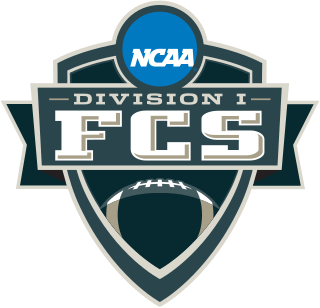
National Collegiate Athletic Association (NCAA) Football Bowl Subdivision independent schools are four-year institutions whose football programs are not part of an NCAA-affiliated conference. This means that FBS independents are not required to schedule each other for competition like conference schools do.

The Atlantic 10 Conference (A-10) is a collegiate athletic conference whose schools compete in the National Collegiate Athletic Association's (NCAA) Division I. The A-10's member schools are located mostly on the East Coast and Midwest of the United States: Illinois, Massachusetts, Missouri, New York, North Carolina, Ohio, Pennsylvania, Rhode Island, Virginia, and Washington, D.C.
NCAA Division I Football Championship Subdivision independent schools are four-year institutions in the United States whose football programs are not part of a football conference. This means that FCS independents are not required to schedule each other for competition as conference schools do. As of the 2023 season, only Kennesaw State will be competing as an independent as they transition to FBS and join Conference USA in 2024.

The Big South Conference is a collegiate athletic conference affiliated with the NCAA's Division I. Originally a non-football conference, the Big South began sponsoring football in 2002 as part of the Football Championship Subdivision (FCS), and began operating the Big South–OVC Football Association in partnership with the Ohio Valley Conference in 2023. The Big South, founded in 1983, is firmly rooted in the South Atlantic region of the United States, with full member institutions located in North Carolina, South Carolina, and Virginia. Associate members are located in Georgia, Pennsylvania, Rhode Island, and South Carolina.

The NCAA Division I Football Championship is an annual post-season college football game, played since 2006, used to determine a national champion of the NCAA Division I Football Championship Subdivision (FCS). From 1978 to 2005, the game was known as the NCAA Division I-AA Football Championship.

NCAA Division I (D-I) is the highest level of intercollegiate athletics sanctioned by the National Collegiate Athletic Association (NCAA) in the United States, which accepts players globally. D-I schools include the major collegiate athletic powers, with large budgets, more elaborate facilities and more athletic scholarships than Divisions II and III as well as many smaller schools committed to the highest level of intercollegiate competition.

The NCAA Division I Football Bowl Subdivision (FBS), formerly known as Division I-A, is the highest level of college football in the United States. The FBS consists of the largest schools in the National Collegiate Athletic Association (NCAA). As of the 2024 season, there are 10 conferences and 134 schools in FBS.

The Idaho Vandals are the college football team that represents the University of Idaho and plays its home games at the Kibbie Dome, an indoor facility on campus in Moscow, Idaho. Idaho is a member of the Big Sky Conference in the Football Championship Subdivision (FCS). The new head coach in 2022 is Jason Eck, who succeeded Paul Petrino (2013–2021).

The Old Dominion Monarchs football program represents Old Dominion University in U.S. college football. The first iteration of the team created in 1930 was known as the William & Mary Norfolk Division Braves. Founded in 2009, the current Monarchs team competed as an FCS independent for their first two seasons. In the 2011 season, they joined the Colonial Athletic Association and added conference games to their schedule, playing there until joining the Conference USA of the FBS in 2014. They joined the Sun Belt Conference in 2022.

The Villanova Wildcats football program represents Villanova University in the NCAA Division I Football Championship Subdivision.

The James Madison Dukes football program represents James Madison University in the sport of American football. The Dukes compete in the NCAA Division I Football Bowl Subdivision (FBS) as a member of the Sun Belt Conference (SBC), beginning play within the conference for the 2022 season. The university first fielded a football team in 1972, and the Dukes play at the on-campus Bridgeforth Stadium in Harrisonburg, Virginia. The Dukes are currently coached by Bob Chesney.

The Stony Brook Seawolves football program represents Stony Brook University in college football at the NCAA Division I Football Championship Subdivision (FCS) level, competing in CAA Football. The Seawolves play at the 12,300-seat Kenneth P. LaValle Stadium in Stony Brook, New York.

The NAU Lumberjacks football program is the intercollegiate American football team for the Northern Arizona University located in Flagstaff, Arizona. The team competes in the NCAA Division I Football Championship Subdivision (FCS) and is a member of the Big Sky Conference. The school's first football team was fielded in 1915. The team plays its home games at the 10,500 seat Walkup Skydome. Brian Wright was hired as the Head Football Coach on December 3, 2023.

The Jacksonville State Gamecocks football statistical leaders are individual statistical leaders of the Jacksonville State Gamecocks football program in various categories, including passing, rushing, receiving, total offense, defensive stats, and kicking. Within those areas, the lists identify single-game, single-season, and career leaders. The Gamecocks represent Jacksonville State University in the NCAA Division I FCS WAC–ASUN Challenge through the 2022 season, after which they will move to Division I FBS and join Conference USA.











